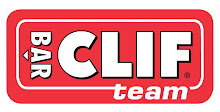
This past weekend I raced the RunVermont half marathon. They changed the course slightly this year to meet USATF certification standards. The course was very accurate, my Garmin read 13.14. All of the mile markers were also spot on. As always RunVemont put on a first class event and this was no exception (RunVemont is the organization that puts on the VT City Marathon). If you asked me even a year ago if I thought I could be running as fast as I am now I probably would have said no. I truly can not believe the progress I am making as an athlete. I wanted to dissect this a little bit and put the performance into a context using QT2s four part system. This performance was a direct result of using QT2 training protocols. These are the same protocols I and the other QT2 coaches use with all of our athletes as well as with ourselves. At the RunVermont half marathon I ran 1:16:57 and took about a minute off my previous best set in February. I also have not done any tempo or speed work yet as my zone 1 (top of which is aerobic threshold) pace was still improving steadily.
At QT2 we use a 4 part system to elicit athlete progress (training, nutrition/body composition, fueling, and pacing) when all these come together they set the stage for great performances. The first part is training. Included here is correct training intensity, consistency, adequate training stress and well timed restoration. I want to point out that in my experience training intensity is very commonly incorrect in many athletes. Some athletes are training too hard/fast and some are training too easy/slow. Getting this area correct is a hallmark of what we do and one of the reasons our athletes make progress. Training intensity is a key reason why I PR’d this weekend. 95% of my runs were right at the top of zone 1 (6:35-6:50 pace). For a deeper rationale why training intensity is critical see my last blog post.
The second part of the system is nutrition/body composition. We live the core diet like it is our religion. If you need to brush up on the core diet go to our QT2sytems website (see link to the right) and scroll to the bottom right for the article by Jesse. In terms of body composition I am currently 157 pounds and 9% body fat. I’ll be looking to be at 6% for my ‘A’ race of Ironman Cour D Alene at the end of June. The reason body composition is critical is that it allows an athlete to make good use of all the training they have done and not be limited by excess weight that is only going to slow them down. 3 seconds per pound per mile are the gains an athlete can find in running for instance. Additionally these athletes can handle hot weather races better as well. Coming into this race I was in a good range for body composition and my overall diet has been great. Lots of nutrient dense food, lots of protein from lean meats and also fueling my workouts appropriately before, during and after.
The third part of our system is fueling. We use a specific fueling protocol for race breakfast and repeat this at each race. Every athlete who gets a fueling plan will have their exact race breakfast articulated and time stamped for how many hours prior to the race. The fueling plan also includes how much fuel to take on during the race. For half marathons we use shot blocks. I nailed the execution of my fueling completely. I also want to point out something. For miles 4-10 I was running side by side with another strong competitor. We were sitting in 3rd and 4th while my buddy Justin was up ahead about 30 seconds and having a great race. I nailed my fueling protocol each 2 miles. The competitor running next to me was not taking in any fuel. At mile 10 he started dropping back. (By the way my 10 mile split was low 58 minutes which was a PR in itself!!). 10 miles is a long way to go without fuel—this also corresponds roughly to when glycogen stores (stored carbohydrate) will tap out and be pretty much empty if you haven’t fueled (AKA bonking!!). Again by nailing my fueling I was able to outperform someone who did not fuel. Of course it is entirely possible his dropping back had nothing to do with fueling but I have to say after seeing how strong this athlete was running to all of a sudden just start dropping back with no pace changes my money is on a lack of fueling on his part for why he dropped back.
The 4th part of our system is pacing. All of our athletes get specific pacing strategies for every race so they set themselves up to race at their potential. In the first 3-4 miles there were guys ahead of me who I knew first hand should not be running as fast they were (you know who you are!!). It takes a great amount of restraint and patience to hold back and pace correctly but it is a critical piece to racing well. I nailed my pacing exactly. Based on recent aerobic training metrics I knew my goal avg pace was 5:50. I did my first mile in 5:51 and my overall avg pace at the end of the race was also 5:51. Nailed it!!
When you take all 4 of these parts and put them together you create scenarios where athletes have breakthrough performances!! I would consider my run this weekend a breakthrough performance no question.
Here's a link to the results-
RunVermont Half results
Keep it rolling, keep the rubber side down, train smart and have fun!!



















No comments:
Post a Comment